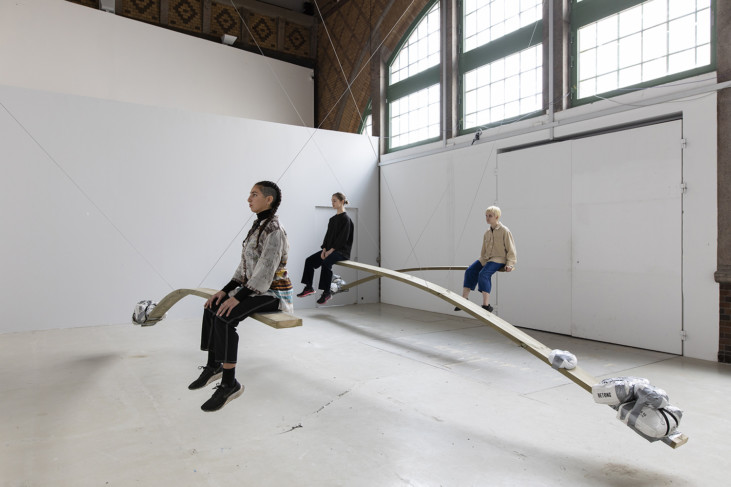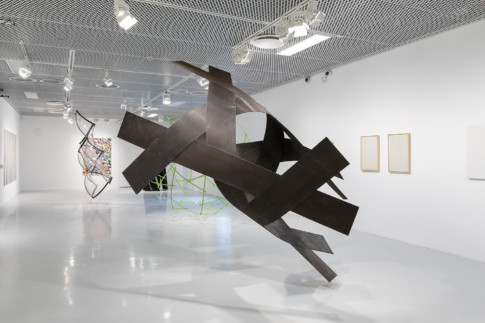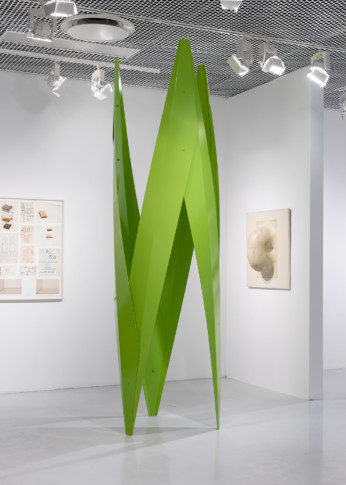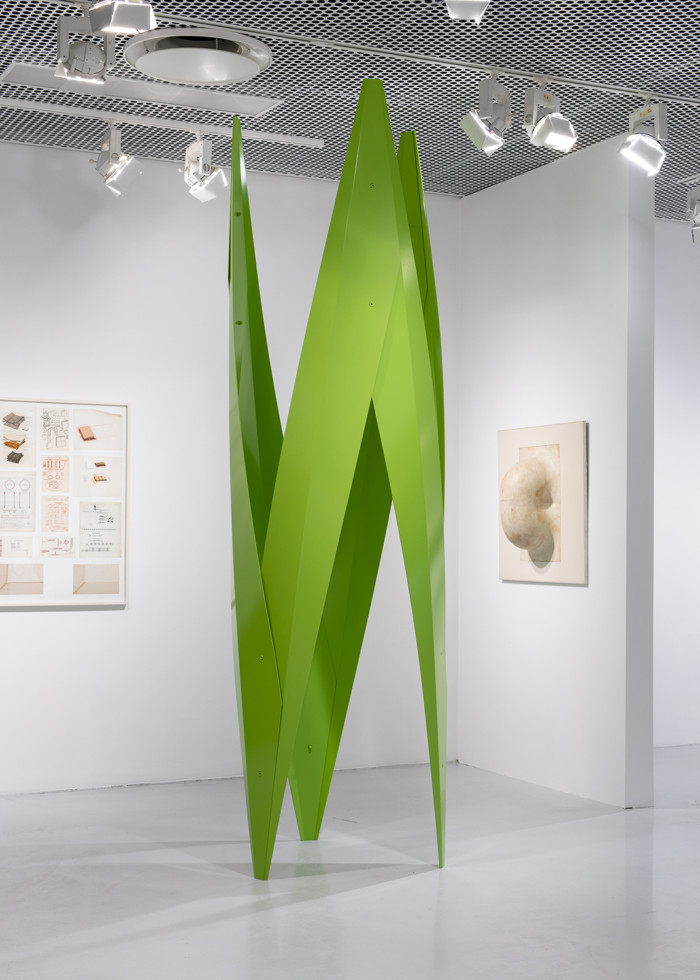
Lars Englund, Installationview Moderna Museet Malmö, 2023 Photo: Helene Toresdotter Bildupphovsrätt 2023
Text by curator
It largely comprises sculpture, three-dimensional objects. For centuries, sculptures have been shaped by manipulating materials such as stone, clay, or wood, then cast and eventually assembled. Even later, sculptures have been created or have been a display of existing objects, like various forms of ready-made art. Lars Englund works often consist of parts connected to other parts. Artists like American David Smith (1906-1965) began welding his sculptures, inspired by Julio González’ and Picasso’s metal sculptures, and it is with an extension of this manipulation Englund works.
We can identify the exhibited sculptures’ materials, we encounter metal, rubber, concrete, plastic. Sometimes, even the manipulation of the material is familiar, such as bent sheet metal. Lars Englund’s piercing green sculpture Spegling in perforated metal is made from the same material as the exterior of Moderna Museet Malmö, but executed in different dimensions. By using the industrial materials and products we encounter in our everyday surroundings, such as those used on building façades, Englund elevates the mundane and makes it extraordinary.
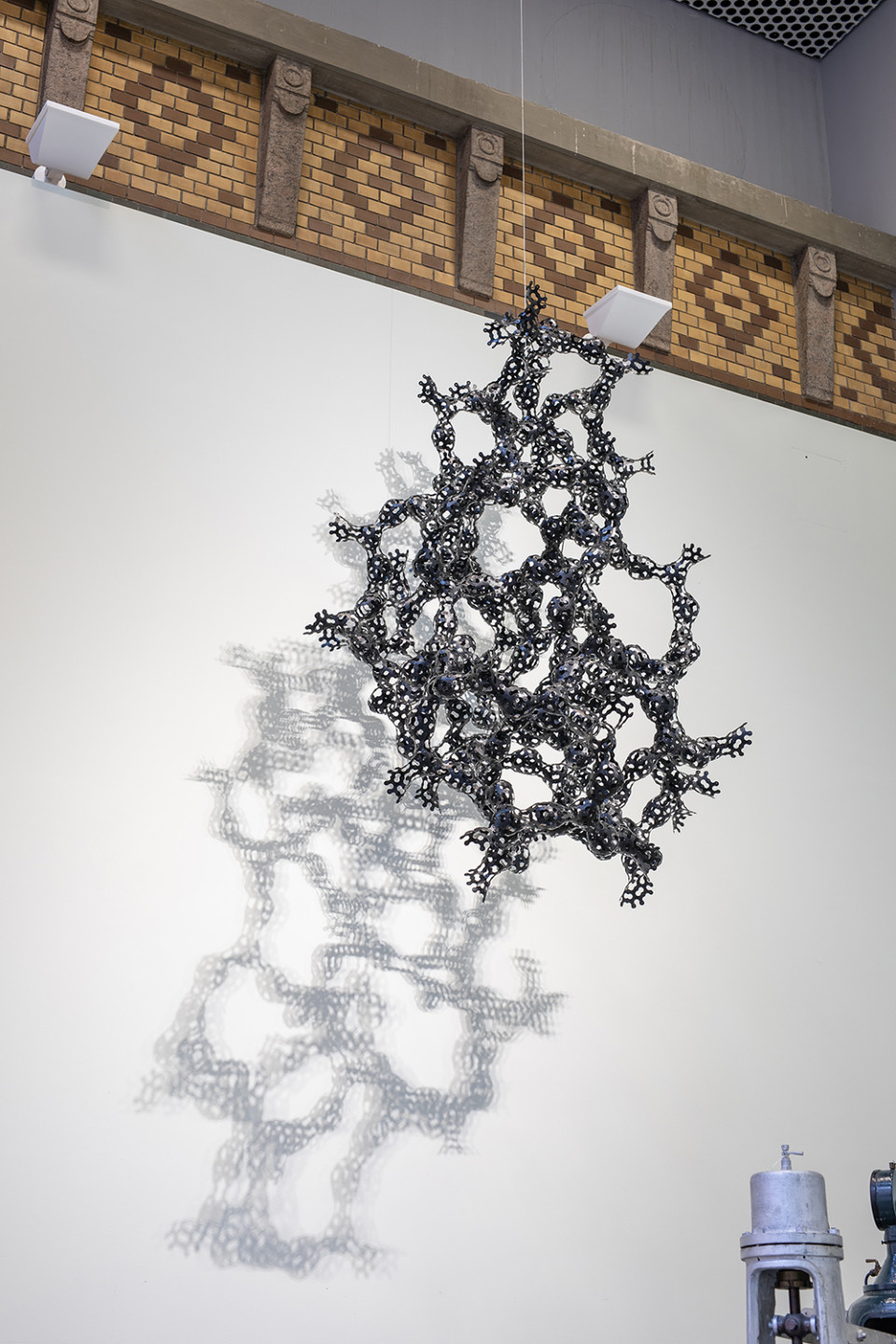
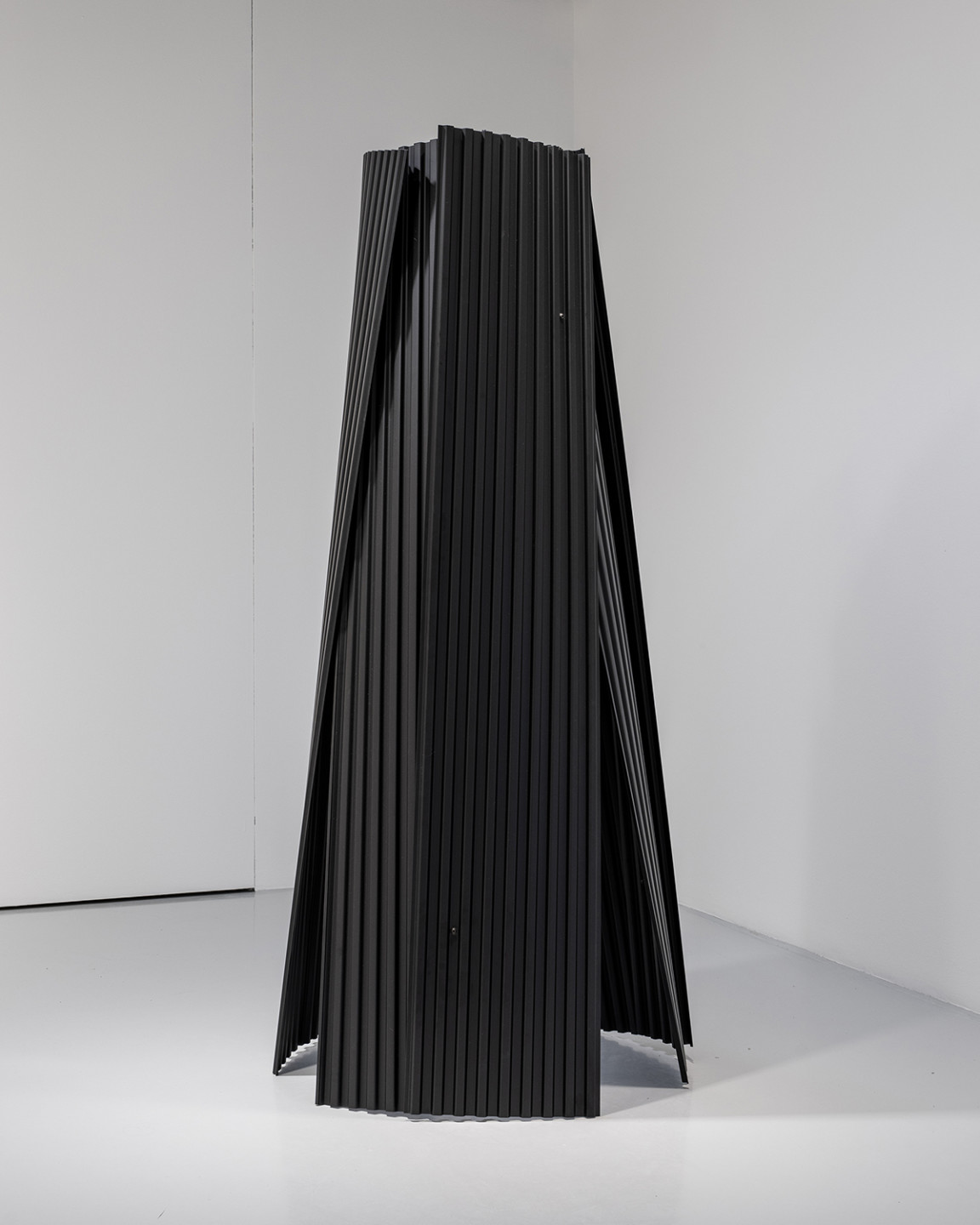
Researching – a driving force
Englund did not attend art school but studied with artists. Trade shows and material catalogs are his training and starting point, even if the material we see in the sculptures most often isn’t off the shelves but special-ordered, frequently directly from the producer in order to fit the use Englund has in mind. Researching materials and techniques is a driving force of his art. The “Volume” sculptures (1964–1967) are created from rubber cloth, a material Englund became familiar with when he was working with a sculpture of concrete.
In the early 1960s, he shifted from painting and two-dimensional images to reliefs, and the two-dimensional was replaced by three-dimensional forms. A natural part of his investigation is a change in scale from model to monumental. He began working with concrete as a continuation of a relief in carton, through the change of material, his sculptures began approaching architecture and in public commissions developed into construction projects in module format. In the decades since 1966, he has presented a public work almost annually, which we can see examples of at Svaleboskolan in Veberöd (2010), at the Swedish Embassy in Algiers (1987), and at Huddinge Hospital (1973–1974).
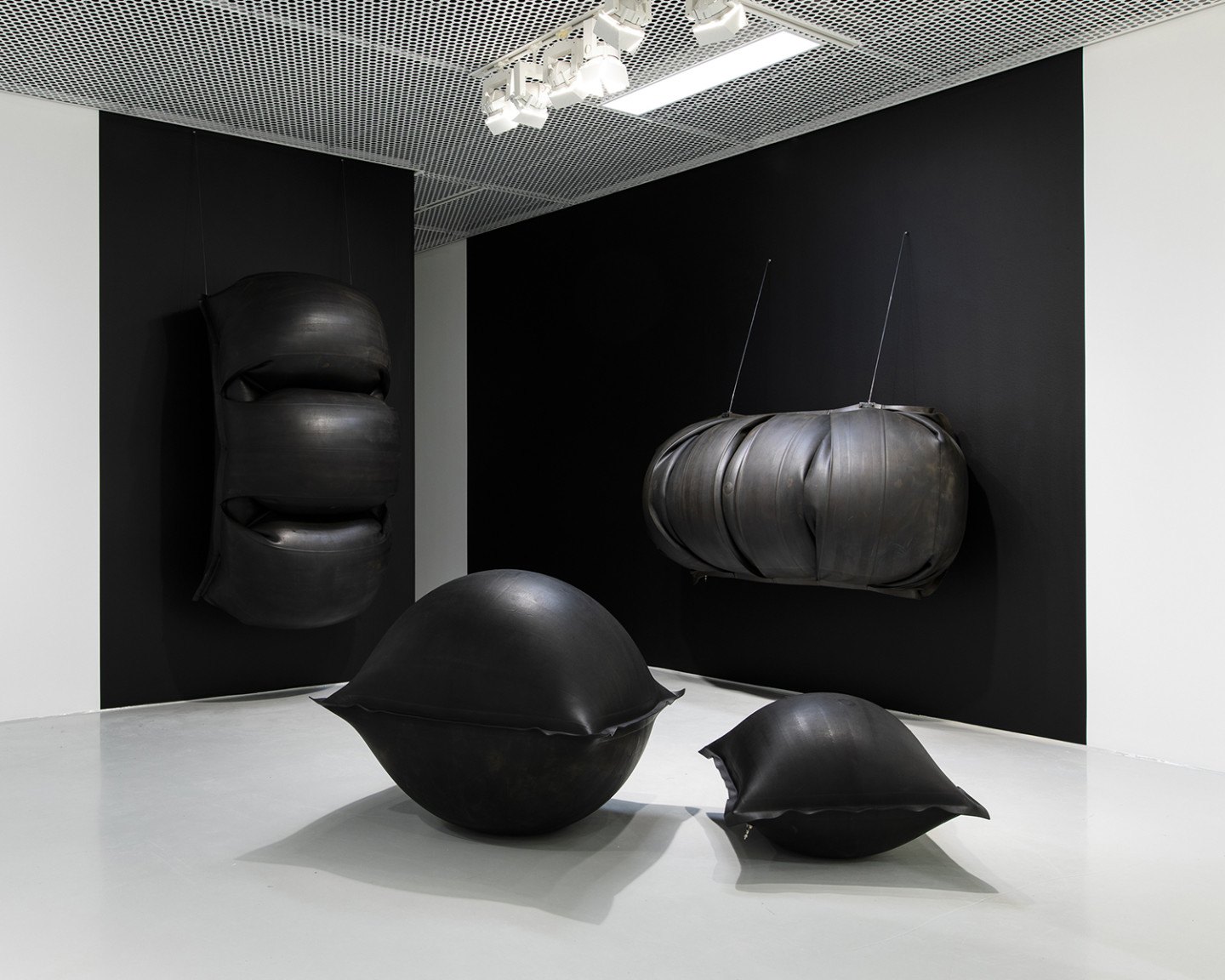
The nonfigurative painting
Early works, paintings and graphics from the 1950s, are also part of this exhibition, with the earliest being from 1953. Englund is part of the development of nonfigurative painting that occurred during the first half of the 1900s. In his paintings of diagonals–painted fields of color dominated–the diagonals then become verticals and the forms are broken up. Diagonals becoming verticals and eventually horizontally oriented lines might seem like a small change, but in an oeuvre of minimalist style, these changes carry significance and can feel almost astonishing. The fields of color in painting were in time replaced by more shades in Communication (enamel painting on film), 1962 while early sculptures are often the color of the material itself, for example, black carbon fiber or gray concrete. Eventually, though, yellow, red, and blue also appeared invisible in Entanglements, 1990, and in the 2000s, colors signaling danger or alert such as bright green, orange, and yellow.
We do not see many of Englund’s own words in the texts that describe his art; the catalogs containing Englund’s works instead use references from the French dictionary Le Petit Littré, but artwork titles such as “Sphere”, “Surface Support Structure” and “Volume” describe and emphasize what we see. We encounter surfaces that are subdivided yet remain whole, flat and bulging. “Pars pro toto” is a recurring artwork title in Latin and describes a characteristic approach–a part for the whole, where parts are linked together into larger forms with a multitude of different possibilities.
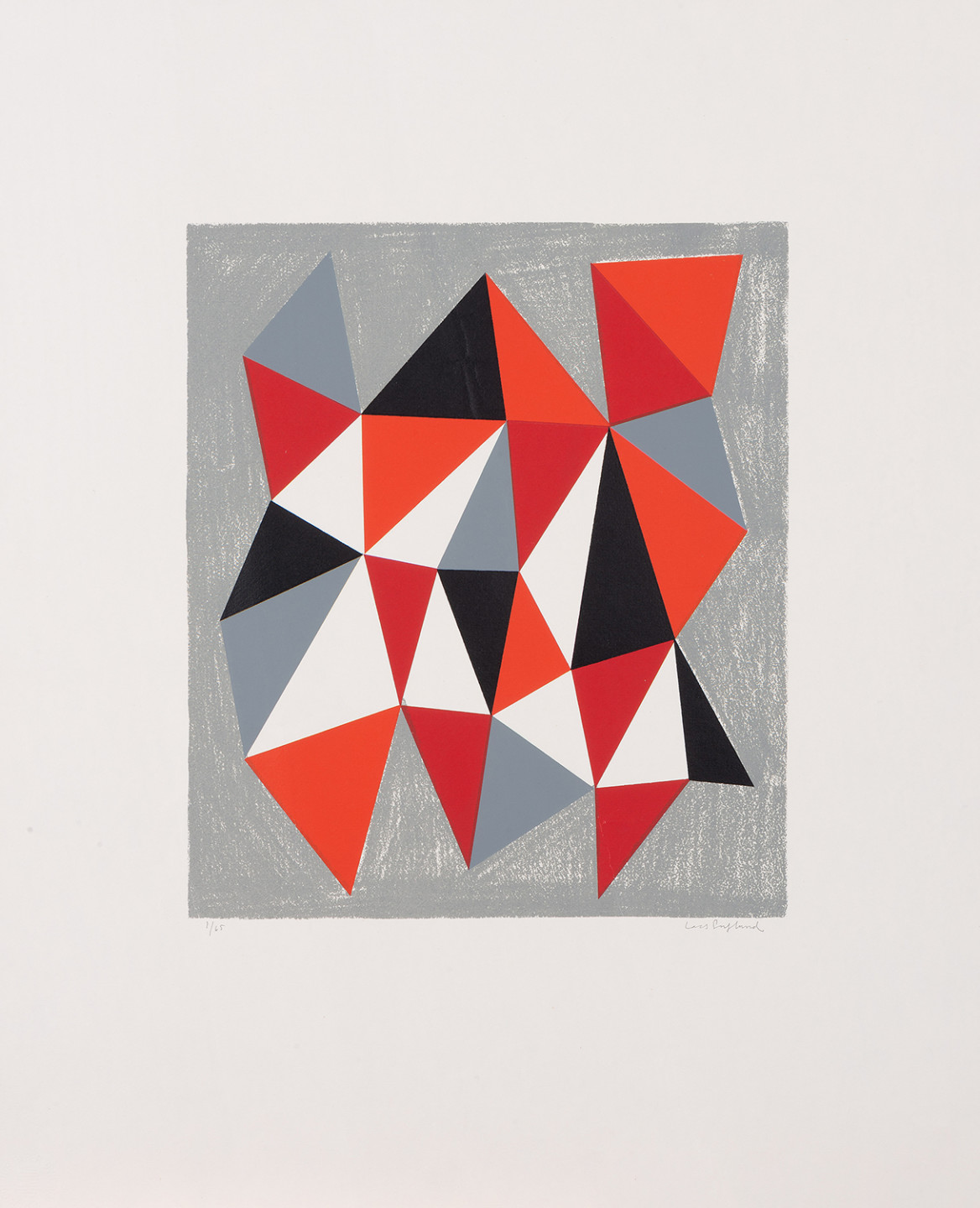
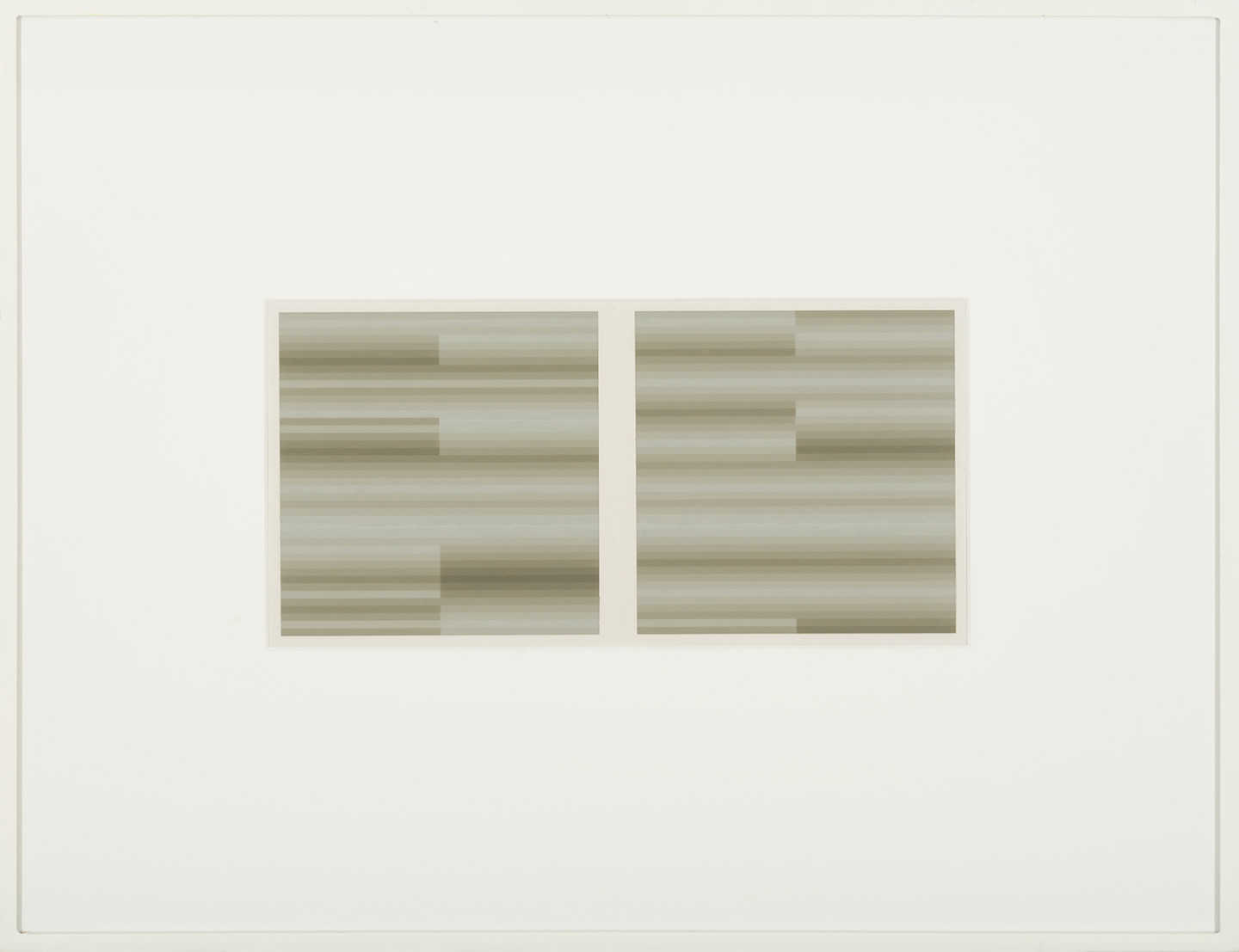
A never-ending exploration
In a video from 1986, we hear the sound of the work creating the sculpture “Relative”; broad metal sections are being mounted together, the drill rumbles, and we can observe the work as it is being done. Lars Englund’s art can be described as under construction, constantly ongoing work that is not limited to the sculptural execution. His sketch material is comprehensive; he twists and turns the forms in a never-ending exploration.
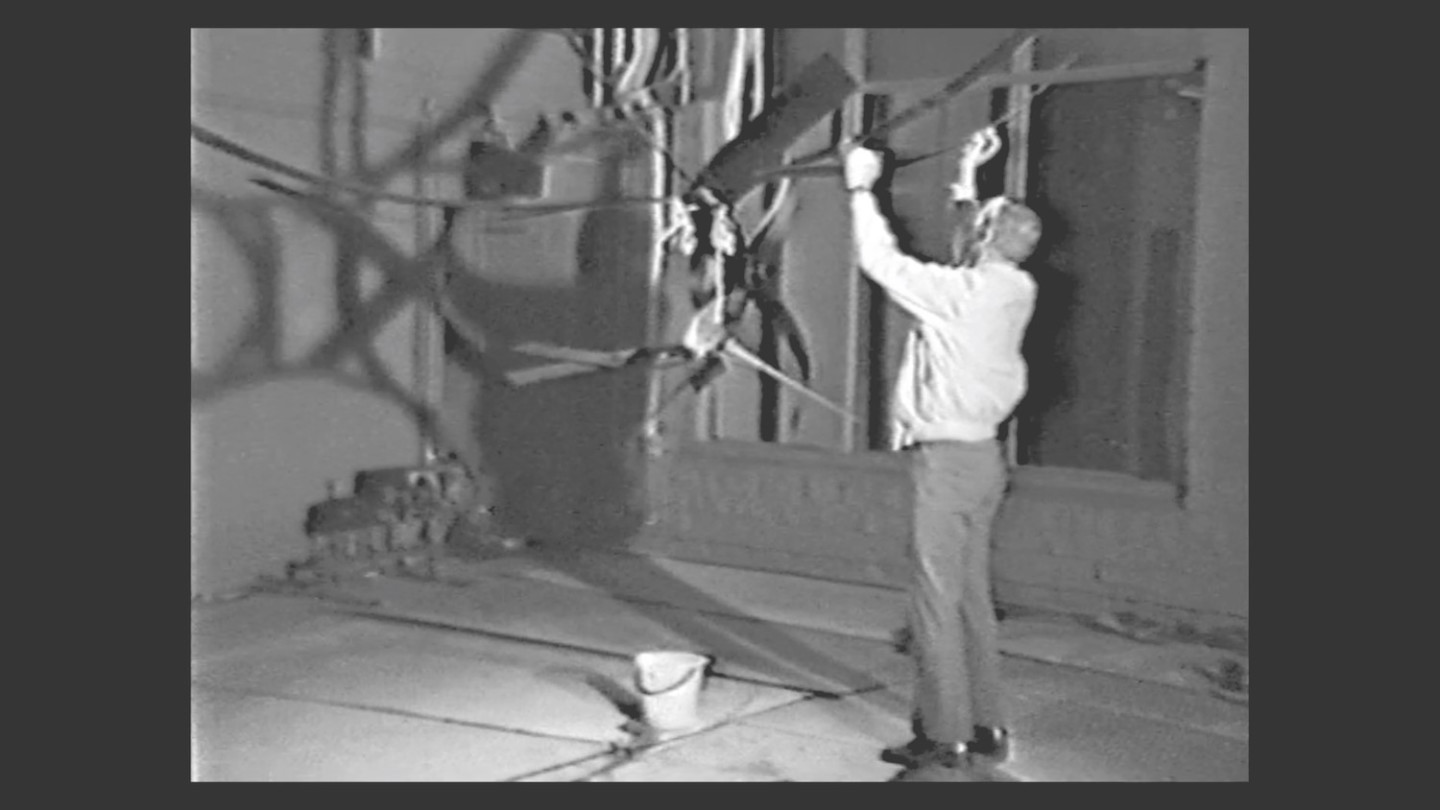
Englund and Essle Zeiss
In 2022, artist Adèle Essle Zeiss contacted Englund, hoping to find out more about his sculptures in movement, the ones he calls “Stabile” and “Instabile”, because she is also interested in movement and stillness. Her investigations are ongoing, but parallel to Englund’s works, we are showing “Statolit”, Essle Zeiss’ installation that is repeatedly activated during the exhibition period through a performance.
Just like Englund, she uses cement (a binding agent in concrete), a material that is associated with durability and load-bearing capacity, but in her artwork, it is not manipulated. This material is simply placed on another: the bag of cement is secured to a wooden plank that hangs in a rope that runs horizontal in the space. The bag acts as a weight, specifically a counterweight to the person who sits on the other end of the same plank. On three planks, bodies are weighed against bags, and every change in position creates movement. Sculptures require that we move ourselves to see how they relate to and change the space. 50 years separate these artists, yet the artworks engage in dialogue. Both Englund and Essle Zeiss demand of us what sculpture often does: that we slow down and use our powers of observation in order to understand the artwork and its surroundings.
Text: Museum Director and Curator Elisabeth Millqvist
Adèle Essle Zeiss
“Statolit” is an installation and performance for three dancers that will be performed several times throughout the exhibition period. …
Statolit
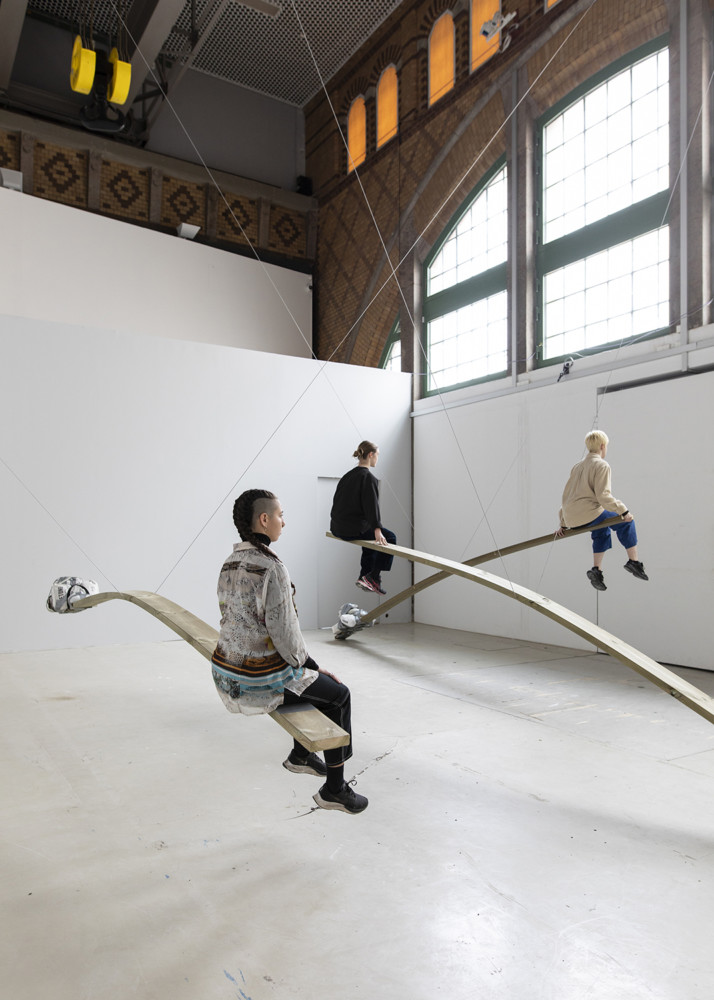
Statolit – Adèle Essle Zeiss
“Statolit” by Adèle Essle Zeiss is an installation and performance for three dancers that will be performed several times. “Statolit” is …
Performance
